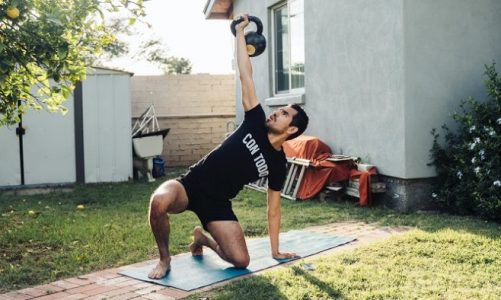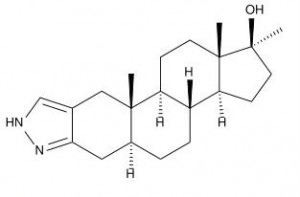1. (De)terminate motor dysfunctions
The first step is to find out if you have any dysfunctions and limitations in your range of motion. If you skip this step, injury will not be long in coming. There is no point in putting a powerful engine on a racing car if the frame is loose and the wheels ‘figure eight’.
This car needs more than an engine. And you need more than just a boom.
One of the best guides for identifying movement disorders is Gray Cook’s Functional Movement Screen.
It will help you determine, in a simple, accessible way, if there are limitations in a person’s movements that could lead to injury. Useful for everyone, not just armwrestlers.
2. Does something hurt? DO NOT TRAIN THROUGH PAIN
Fighters, of course, are so tough… but a hardened character sometimes helps and sometimes hinders, especially in iron training. If you feel pain in any joint while moving, you can’t go on ignoring the pain. It will only get worse.
When I started working with Rixon Gracie’s guys, many of them were amazed at my caution and attention to the athlete’s condition. I very tactfully explained to them that 90% of fighters already suffer some form of injury limiting movement. They were expecting the coach in the gym to whip while the victims wriggled under the barbell and screamed in pain. “Hurry up, assholes!” – is what they expected to hear.
However, Gracie hired me not only for my expertise in strength training, but also for my ability to identify and correct joint abnormalities. After all, jiu-jitsu was invented to twist the joints into a position they shouldn’t be in.
Arms don’t bend that way? Didn’t know.
See a good physiotherapist or other professional who understands the workings of the human body. Just realise that there is no point in cranking the volume up when the speakers are rattling.
3. my REAL power recommendations
Sometimes I’m misunderstood worse than a drunk with a speech impediment. Of all the nonsense attributed to me, the most misrepresented recommendation is for martial arts practitioners.
Firstly, they say that I require a ‘handler’ to squat AND pull 2.5 of their own weight. I didn’t demand it. I said squat OR pull. If you’re tall and have long limbs, squatting is not for you. You’re more likely to ruin your knees than reach that weight. And that’s counterproductive when trying to build a strong, healthy body.
Secondly, squat or pulling 2.5 of your own weights is not a requirement! It’s just a certain level. What I meant was that if the deadlift suits you, it’s a good idea to incorporate it into your training and get to these levels.
It does not mean that you will immediately start beating everyone in the ring. It will mean that the muscles of the rear surface of the body are developed to the level that would only be required in a martial arts competition.
I’m just suggesting that a 90kg fighter will eventually get to 225kg in the deadlift. That’s not that much. And even if he doesn’t reach that level, training with that goal will still benefit him.
Thirdly, for those who weigh more than 90 kg I lower the bar. For example, a martial artist weighing 110 kg does not need to squat or pull 275 kg. For him I set a target of around 2 of my weights.
I don’t recommend this exercise to anyone. No matter how much you weigh.
A ‘hand-to-hand’ fighter does not have much free time or energy to exercise with iron. Professional fighters usually dedicate no more than 2 workouts per week to developing maximal strength.
By setting such a bar for squat or deadlift, I decide how much training time to devote to these exercises. Ideally, don’t go overboard, as there is a lot more to work out in martial arts.
If a client is close to 2-2.5 their pulling weights, they can only pull once every 4-6 weeks at most.
Fedor’s post-training eating – he’s allowed anything.
Strength is very important for a fighter, especially if his skill is lame. Fedor doesn’t need to lift 2.5 of his own weights because he is Fedor. Royce Gracie, when he started competing, didn’t need to either, because his technique was much better than that of his opponents.
Today, however, more is required of newcomers as mixed style fights are evolving very quickly. In my opinion maximum power is undeservedly overshadowed by the power-stamina-mobility triad.
In the spring of 2007 I was hired by a fighter preparing for a title fight. He took up Thai boxing and had never trained with iron before. That’s why in three months we managed to increase his strength in various exercises twice or even three times.
The day before the competition he caught a cold. When I went to the locker room before the competition, he was totally blank – sneezing, coughing and barely breathing after the warm-up. In the second round all the anaerobic endurance we had built up was gone. He was exhausted. But the maximal strength developed by our training was so great that he still defeated his opponent. He got his belt.
Many coaches say that maximal strength is the key factor that determines the development of many physical qualities. It is true. But for some reason those same coaches disagree when I encourage fighters to work with iron. Hand-to-hand combat is a power martial art, so fighters must improve their strength performance. In my opinion, this is obvious.
You can’t claim that maximum strength is important and then start arguing with me when I say you should develop maximum strength. You are contradicting yourself.
4. Take care of your shoulders.
Very often fighters have a wild imbalance of the shoulder girdle. The pectorals and broads are too tight and taut, the shoulder rotators and serratus are weak, the rhomboids are weak, the lower trapezius is nonexistent, and the range of motion of the front delts is limited.
“The serratus is right there.
All this not only leads to chronic shoulder pain, but also limits freedom of movement and strength development.
I am constantly approached by fighters who have injured their shoulders by starting to do the kettlebell jerk. Fixing the kettlebell on a straight arm puts a lot of stress on the connective tissues of the shoulder joint.
But the problem is not the jerk itself, but the injuries previously accumulated by athletes. Whenever you choose an exercise, you have to balance the risks. Lifting kettlebells is very likely to harm ‘hand-to-hand’ athletes, so I usually do not use it. For fighters exercises that statically load shoulder joints are more suitable.
A great option is the Turkish lift:
Or a squat with a barbell over your head. Walking with dumbbells over your head is also good: simply take the dumbbells, squeeze over your head (palms facing each other), walk for a minute.
These exercises are great for strengthening the shoulders without compromising the health of the joint. The risk is minimal, the benefit is huge.
I also use another movement to increase range, it can be called by different names: shoulder roll, stretching behind the head, etc. Whatever you call it, it’s very useful for those involved in martial arts. The main thing is to keep your arms straight and gradually narrow your grip. My clients start with 2-3 sets of 10 reps daily.
Starting position.
Backward movement with straight arms.
It is desirable to reach this point before returning to the starting position.
5. Develop special endurance
Long-distance running develops general endurance. So does cycling. But neither will produce the kind of endurance that fighters need.
Take for example a professional wrestler. He can roll his opponent around the mat for half an hour without showing any signs of fatigue. But make him hit a punching bag for 10 minutes straight and he’ll die quickly. The problem is not general endurance – he lacks endurance of certain muscle groups.
The most important muscles for a fighter are the shoulders and the muscles of the rear surface of the body. To develop stamina in the shoulders for punching, you have to punch a lot with your hands. It’s understandable.
But physical training can also include exercises such as multi-repetition squats with a barbell overhead, jumping rope, squats with a weight in front of the chest and static dumbbell bending holds.
Overhead barbell squats
Few things work the entire body at once like the overhead barbell squat. However – to develop special endurance in the shoulder girdle – these squats should be done in a high repetition range with low weights.
Start with a weight that allows you to squat 25 times with good technique. This is usually an empty bar. Do squats every other day, adding a few repetitions at a time. Your target is 50 in an attempt.
Then put a couple of pancakes on the bar, go back to 25 reps and do the whole cycle all over again. This is a great way to develop special endurance while improving stretching and co-ordination.
Jump rope
These are often used in athlete training as they are an excellent anaerobic exercise. Don’t forget that fighters need mostly anaerobic, strength endurance.
And jumping rope also develops endurance in the shoulder girdle. The main thing is not to press your elbows against your body, rotating only your wrists. Spread your elbows wider and make big circles with your arms to engage your shoulders more.
At first you will hate this exercise because of the hellish burning in your shoulders, but this is how you will build incredible endurance. The aim is to bounce continuously for 10 minutes at a good pace.
Front squat with weight in front of you
Front squatting should be included in any fighter’s training program. The regular front squat with heavy weights is an excellent full body workout.
For most people, squats with a weight (dumbbell, pancake, kettlebell, etc.) held in front of you are even better. You will strengthen your body stabilisers and improve your shoulder girdle endurance.
Start with a weight with which you can do 1-2 sets of 25 reps. Add a few reps every 2-3 days. Reach 50 repetitions, then increase the weight and start with 25 reps to do the whole cycle again.
This exercise is also useful to do in a strength scheme, but for fighters I prefer the multi rep version to develop specific endurance.
Leaning Holds
Joint health depends on a balance of strength and mobility. I’ve already said a lot about shoulder girdle endurance, but you can’t leave out the posterior surface muscles.
There is one excellent exercise that is particularly useful for fighters – the bent-over hold. Take light dumbbells and spread your straight arms out to the sides. Now, pulling your pelvis back, bend down almost parallel to the floor. Your back is straight, head along your body, knees bent, palms facing down. Hold this position for a while.
This exercise is useful in many ways. Firstly, the rear delta bundles become sturdier. In order for the joint to be healthy, you need a balance in the development of the surrounding muscles. By strengthening the posterior deltoid, you will normalise the tightness-stretch ratio of the shoulder girdle muscles.
Secondly, holding in an incline develops the endurance of the entire posterior body muscle chain. I’ve seen lifters who lift 2.5 of their own weights in the deadlift, but can’t stand in a bend without additional weight for two minutes. This is NOT a healthy back.
Studies consistently show that a certain amount of strength endurance is necessary for a healthy lower back. The higher the endurance, the less likely you are to get injured.
It is therefore extremely beneficial to incorporate these holds into your training programme. Start easily (even without dumbbells) and hold a static position for 2 minutes. Gradually increase the intensity by taking weights in your hands.
Carrying a heavy bag
One last exercise that develops whole-body anaerobic endurance and further strengthens the upper back. My clients walk (or even run) with a 50kg bag for one minute. This is a great addition to any fighter’s training program. Just maintain proper posture while performing it.
6. Reduce inflammation
Usually fighters LOVE post-training pain. They are old-fashioned. They believe that without pain there is no progress. The hardest thing, when working with them, is to change their minds on this issue. An overloaded immune system is the last thing a fighter needs. It is imperative to control inflammatory processes.
One of the most effective remedies is taking a mixture of healthy fats. Of course, three to four servings of fruit and vegetables throughout the day and enough complete protein are also important, but the following set of supplements works wonders for my clients: omega-3 supplements, fish oil, GLA (gamma-linolenic acid).
7. Take Surge Workout Fuel
By the way, I don’t get paid to advertise this or that supplement. And at the same time I must say that Biotest’s Surge Workout Fuel provides invaluable assistance in the preparation of the fighter (*exactly this “invigorating pre-training complex” recommended by Chad is not sold in Russian shops, but on the same iHerb there are many analogues based on the same ingredients).
Composition of Biotest’s Surge Workout Fuel. Look for analogues.
If power endurance training is hampered by bouts of nausea, a pre-workout complex will help, as it slows proton buildup. You’ll also be able to train longer and at a higher intensity. Finally, it will speed up recovery.
Conclusion
As I told Rixon Gracie’s team at our first meeting, “I won’t make you better fighters – that’s the instructor’s job. I will make you better athletes.”



